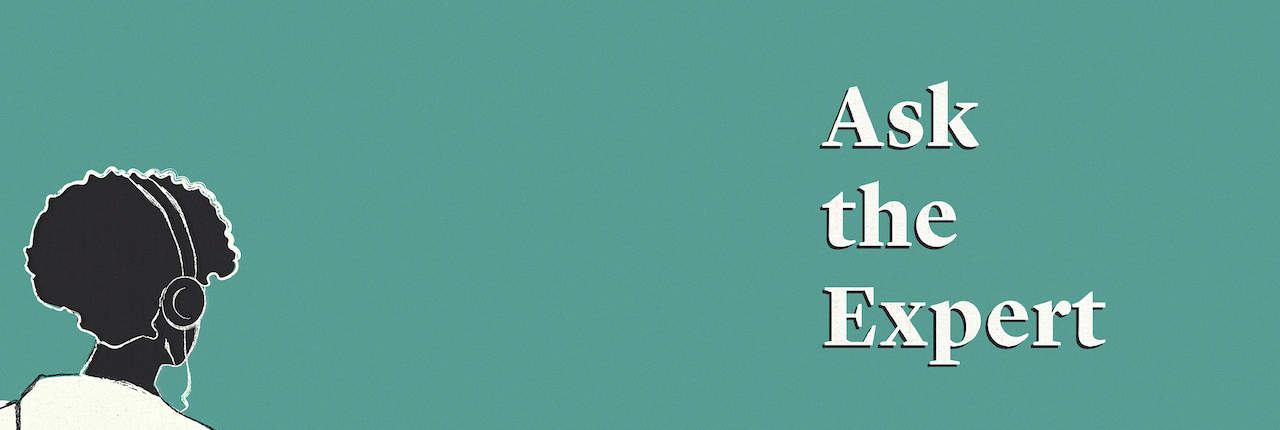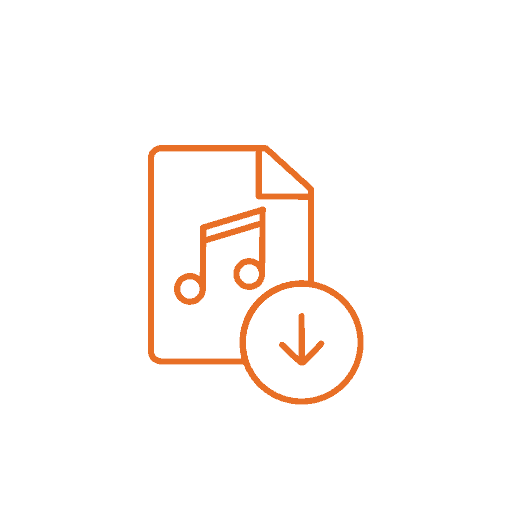Air Travel with a Disability: Blind and Guide Dog Travel
August 26, 2022
Dr. GG deFiebre of SRNA was joined by Andrea Mitchell of the MOG Project for an Ask the Expert podcast on “Air Travel with a Disability: Blind and Guide Dog Travel.” Andrea began by providing suggestions on how to prepare for a trip and notify an airline about travel with a guide dog. She detailed how to maneuver through security while never separating from the dog, the rights of passengers who have disabilities through the Air Carrier Access Act (ACAA), and resources available from TSA Cares staff and airlines’ Complaint Resolution Officials (CRO). Finally, Andrea described utilizing relief areas at airports, the process of boarding an airplane, flying with a guide dog, and getting off of an airplane.
Helpful Resources:
https://www.transportation.gov/airconsumer/passengers-disabilities
https://www.guidedog.org/GD/caresupport/TravelTips.aspx
https://www.seeingeye.org/blog/tips_for_traveling_by_air_with_a_guide_dog.html
Transcript
[00:00:00] Dr. GG deFiebre: Hello and welcome to the SRNA “Ask the Expert” Podcast Series. This podcast is entitled Air Travel with the Disability, Blind and Guide Dog Travel. My name is GG deFiebre and I moderated this podcast. SRNA is a nonprofit focused on support education and research of rare neuroimmune disorders. You can learn more about us on our website at wearesrna.org. Our “Ask the Expert” Podcast Series is sponsored in part by Horizon Therapeutics, Alexion, AstraZeneca Rare Disease and Genentech.
[00:00:28] Horizon is focused on the discovery, development, and commercialization of medicines that address critical needs for people impacted by rare autoimmune and severe inflammatory diseases. They apply scientific expertise and courage to bring clinically meaningful therapies to patients. Horizon believes science and compassion must work together to transform lives.
[00:00:47] Alexion, AstraZeneca Rare Disease, is a global biopharmaceutical company focused on serving patients with severe and rare disorders through the innovation, development and commercialization of life transforming therapeutic products. Their goal is to deliver medical breakthroughs where none currently exist, and they’re committed to ensuring that patient perspectives and community engagement is always at the forefront of their work.
[00:01:07] Founded more than 40 years ago, Genentech is a leading biotechnology company that discovers, develops, manufactures, and commercializes medicines to treat patients with serious and life-threatening medical conditions. The company, a member of the Roche Group has headquarters in South San Francisco, California. For additional information about the company please visit gene.com.
[00:01:27] For today’s podcast, I was joined by Andrea Mitchell. Andrea Mitchell has had a relapsing form of MOG antibody disease since October 2011. It took two years for her to find the right diagnosis and due to a lack of aggressive treatment, she lost the sight in both of her eyes. MOG antibody disease has also affected her hearing and bladder. She often suffers from daily pain all over her body and continually fights off fatigue. She has a very loving and supportive husband named James, they have a loving retired guide dog named Newcastle, they have a beautiful yellow lab named Indy and he is Andrea’s new guide dog since October 2021.
[00:02:02] Her passion is to educate, empower, promote advocacy, and support others dealing with this rare condition. She enjoys helping those who are newly blind find resources, regaining their independence. As an executive board member for the MOG Project, she assists in providing educational materials, conduct support groups and connects with others through social media and email inquiries. Her husband, James is passionate about advocacy and the caregiver role. They currently live in the San Francisco Bay Area located in northern California.
[00:02:30] Thank you so much for joining me today to talk about what it’s like to travel with a disability specifically with also a guide dog. So, I just wanted to ask some questions about how you prepare for your trip when you’re booking your flights, when you’re buying your tickets? Do you have to notify the airline that you’re really traveling with your guide dog or notify them about anything else? Is there a special ticket you need to purchase? I guess just going to walk me through kind of how you prepare for the trip in that beginning status.
[00:03:02] Andrea Mitchell: Absolutely. So, the first thing that I did was I called the guide dog school, Guide Dogs for the Blind in San Rafael and I asked them, what do I need to do to travel… Travel abroad or travel within the US, what are some of the tips and suggestions? So, the first thing that they did was they gave me a verification letter and basically what that does is just it tells the airline that I have an actual trained professional guide dog, the date that we actually graduated and kind of what he does for me, and it spells everything out. So, I have that ahead of time to provide to the airlines and I do an upload of that file on their website to make sure that they have that as well as we also have to provide vaccination status and give them the rabies status and the tag number and when the rabies shot was delivered.
[00:04:07] So, that’s another important requirement as well as there’s… A Department of Transportation has two forms that are available there that we do need to fill out in advance. And it’s basically again, saying a lot of information about the breed of the dog, where they were trained, the name, the weight, if they’re able to be able to be on a flight and not have an accident while they’re on the flight, so it’s like a list of questions and forms that need to be provided in advance. So, that you don’t get to the airport, you’re running late or something, they go, where’s your forms? Well, I don’t have them. Then that could be a problem that could hold up the situation, you might have to book another flight if you don’t do all of this in advance if they can’t get it in as quickly as they need to.
[00:05:01] So, usually these forms require like a 48-hour advanced notice. So, you need to contact the airlines, make sure you submit your forms and then another piece of it is you have to think about do I need to preboard which I usually do a preboarding, so that way I’m not trampled by a bunch of people who are coming on the plane and they’re able to move around a little bit better than I am. So, it’s a lot of preparation in that sense. And there’s also another thing called TSA Cares and I also call that hotline and I tell them about the disability that I have with my blindness. But I also have problems standing for long periods of time, so they make sure that I get through that security checkpoint a little quicker, so I kind of go to the front of the line but I still need to wait to get to the screening process. And I know that there’s a new thing, I believe it’s called pre… What is it? PreCheck Clear? There are different levels of identification, things that you can kind of speed through the line, and they do a background check. So, I believe it’s called PreCheck.
[00:06:14] Dr. GG deFiebre: Yes.
[00:06:14] Andrea Mitchell: Where you can… Yeah. Get this done a little bit quicker and pain free. And then it takes… Yeah, it takes some time to get all that preparation done, but it’s a lot of planning and preparing ahead of time.
[00:06:33] Dr. GG deFiebre: Got it. And so, when you… So, when you’re purchasing the tickets, is that… The information about those forms, is that kind of come up as you’re purchasing them or is it always something you have to call the airlines after you buy the tickets?
[00:06:47] Andrea Mitchell: Well, after… What I do first is I purchase the tickets and then after I’m done purchasing the tickets, I will call the airlines and ask what I need to do ahead of time just to make sure all my ducks are in a row because some airlines may differ with some of the forms. So, it’s really important to check in and see exactly what that airline prefers. And so that’s the way I go about it and I will just make sure those forms are filled out and put in in advance and then I know there’s other states Hawaii, I believe is one, that will actually quarantine the dog for a certain amount of time. And that’s where I would kind of question and say, do I really want to have my dog go through this process? Because it could kind of affect them in the way of their work and delivering their work after they’ve been quarantined or put in a foreign place for a while. So, I don’t know, you have to kind of balance it out and make those choices and see what’s the best fit for that situation.
[00:07:52] I even went to London a while back to go to a patient day and I had Indy, but we were still a new team, and we were still learning each other and sometimes he has some hard relieving where he just doesn’t want to go, he gets shy. So, I was thinking to myself this is like a 12-hour flight, I don’t think I want to make this flight the first flight with him. So, it’s about making those choices. And after coming back from Illinois, which is about 3.5, 4 hours away from where I live, it was a success, there were no issues that he had as far as relieving and whatnot, so it was a success.
[00:08:34] Dr. GG deFiebre: That’s good, that’s good. And so, do you have any recommendations about what to bring or what not to bring with you on the flight? For you or for the dog as well.
[00:08:45] Andrea Mitchell: Yes, absolutely. So, I actually have a backpack that I take on my flights and it’s just for Indy, actually it has all of his necessary things, items. What I do is I premeasure out his food, I put them in zip locks, and I make sure I have a supply available there an extra day in case there’s any flight delays of that type. And then I also… If I’m going to have a longer trip, I will put more food in my suitcase and make sure that comes along with me or I guess you could always order online, and have it delivered as well if you don’t want to carry a bunch of food around. I also have collapsible food and water bowls that makes it easier because it just all flattens down.
[00:09:30] I do make sure that I carry his brush, his comb, because he has to look good, he’s in public and his toothbrush and toothpaste and shampoo. If you’re going to be somewhere in an extended time period, it’s important because they’re a professional working dog to have a good appearance and of course a good smell especially being on an airplane. And then I just make sure also that he has toys, a variety of toys available. I do bring poop bags because I know that’s a necessity as well. So, a lot of items geared to his grooming and also his upkeeping and just making sure he’s happy all around.
[00:10:18] Dr. GG deFiebre: Got it. And then do you have to arrive early to the airport? I mean, I know we’re all told we’re supposed to get there a certain number of hours in advance, but do you get there at any earlier than kind of the average person does or how do you plan that in for your day?
[00:10:34] Andrea Mitchell: Yeah, actually I do plan to get there earlier like at least an hour before. I had mentioned that he’s kind of a hard reliever, he gets shy especially in new areas, so thankfully I do know the San Francisco Airport very well, been there a number of times, so I know where the outdoor relieving area is as well as the indoor and I try to choose the outdoor because the indoor honestly is not upkeep very well and it has a strong smell in there, so usually will try to take him to the outside relieving spot and hope that he will go. But before we even get to that point, I do relieve him at home to make sure he’s emptied out as much as he can be.
[00:11:22] But it’s kind of one of those things where you have to decide how long is the flight going to be, if it’s going to be an extended flight, maybe I need to hold the water and the food that morning and that’s what the guide dog school has recommended as well, just hold the food and water until you get to your destination, that way there’s no issues. And then also to bring with you on the flight, there’s potty training pads that they usually use to train dogs, but you can bring one to put down at your feet and have him lay on it in case of any accident and then bring paper towels and hand wipes with you in case there is an accident. Hopefully there won’t be, I’ve never encountered it, but it’s good to have… Be prepared and have some supplies with you just in case.
[00:12:16] Dr. GG deFiebre: Yeah, always better to be prepared. Like when you don’t have the stuff is when things happen, so always good to have the supplies you need even if you don’t end up needing them, so.
[00:12:27] Andrea Mitchell: I have never had to use them, I mean even with Newcastle, I’ve never ran into the problem of him having an accident. They just… They kind of note to go when you give him the command to do their business and then they will do their business.
[00:12:46] Dr. GG deFiebre: And so, do you mind describing the process of taking your guide dog through security and what that is like?
[00:12:53] Andrea Mitchell: Absolutely. So, when we go through the security checkpoint, I make sure that the person knows that I’m blind because sometimes even though I have my guide dog, people don’t realize it. So, I just say up front that I’m blind and I have a guide dog and I cannot be separated from him. So, what I do is I take the leash and I make it long, so I take one end off and I stretch it out and make it a long leash and what I’ll do is I’ll go through the security checkpoint first and then I will have him in a sit and stay position of course before I go through. And then as I’m going through and I’m on the other side I will call his name, I’ll say, Indy ” come” and then he’ll come over to the other side and get through that security checkpoint. So, it’s a process where you don’t want to be separated from your dog and they should never try to separate you, they should never have you remove the harness because that’s how he’s working. So, if there’s any hesitation or problems, you could have TSA Cares also be there available to make sure that the process goes smoothly.
[00:14:10] Dr. GG deFiebre: Okay. And then in terms of… You did mention that there are relief areas in the airports, are these in most airports? All airports? What is your experience been?
[00:14:22] Andrea Mitchell: Yes, so my take where I… All airports do have relieving areas. I’ve never been to an airport yet, maybe there’s some out there, but I’ve never been to an airport that doesn’t have a relieving spot. And if they don’t, what I do is I try to find a spot outside of the airport where there’s grass, what not for him to do his business, but I’ve never had a problem with it at all.
[00:14:51] Dr. GG deFiebre: Okay. And then what is the boarding process like? I know you mentioned someone boarding first, but if you talk about what that’s like, that’d be great.
[00:15:01] Andrea Mitchell: Yes. So, I try to get that priority boarding and they usually give it to me because I have a disability other people with disabilities can also ask for priority boarding and that lets you go first and then you’re able to get to your seat and figure out where you’re going to be and you get a little extra time so people aren’t kind of pushing behind you because that happens a lot. So, I asked for that process and I also before I forgot to mention, I do request bulk seating and the reason being is Indy is a very large dog, he’s 86 lb., so he will not fit under a regular seat. And I have tried, and it did not work and so I do ask for the bulk seating and if I get hesitation with that because I’ve kind of had pushback before where they said, “Oh well, we don’t have to accommodate you.” But actually, they do have to accommodate, because it is part of the Aircraft Carrier Act that they help make that transition go smoother for people with a disability and that have service animals that specifically do a task or function for them, and they do need to accommodate the bulk seating. I’ve asked for it in advance, sometimes I’ll get it, sometimes I won’t, but if I don’t and I get to the gate, that’s where I start talking and having a conversation with the airline representative to see what they can do to accommodate me. And I’ll show them the dog, I’ll show him Indy and say, okay, well he’s a big boy so we need to do something, he can’t stay in the aisle, right?
[00:16:49] Dr. GG deFiebre: Yeah, definitely. So, you mentioned obviously the book… Bulkhead seating, he’s a big dog and so having that extra space, but are there any other kind of tips or tricks you have for having your dog on the flight? Is there anything you kind of do to help them feel comfortable on the flight?
[00:17:07] Andrea Mitchell: Yes, absolutely. So, like I mentioned, Indy is a large-sized dog, so I take the harness off while he’s at my feet, just so he can be a little bit more comfortable, depends on the length of the flight of course, if it’s a very short one, I may not take the harness off. But I also make sure I reassure him because he gets a little nervous when there’s that take off with the plane, because there’s all that vibration and noise. So, it can be a little scary for a dog, so I do pet him, and I reassure him, and I rub his ears and I just make sure he’s reassured, and he knows he’s okay and that calms him down.
[00:17:52] I’m sure there’s other things that could be done as well as far as giving him like a melatonin type of supplement or whatnot for a calming effect, but I have not had to do that myself personally, I’ve heard of others doing that. So, just calming him down and making sure he’s okay and just reassuring. And then also, I have to make sure that… And this is the hard thing with service dogs, they’re so cute, right? They’re like teddy bears, everyone wants to pet him, but when he’s on his flight and he’s working, if he doesn’t have the harness off, I have to tell people I’m sorry, but you can’t pet him at this time because he’s working. And that’s very important because if we start letting people pet our dogs what happens is they can get distracted and then that could cause us to trip and fall.
[00:18:46] Dr. GG deFiebre: Right, very important. Yeah, they are working professionals so–
[00:18:51] Andrea Mitchell: Yes.
[00:18:51] Dr. GG deFiebre: You respect that. And then… So, I know as a wheelchair user, I also go on the plane first and then I’m the last one off typically, so everyone gets off the plane before me, but what’s the process like for you in terms of getting off the airplane?
[00:19:10] Andrea Mitchell: That’s a good question. Yes, so it kind of depends, for me it kind of depends on where they located me, like if I’m all the way towards the back of the plane, I might just wait, until everyone’s off. So, I don’t have to be trampled because sometimes you feel that claustrophobic, I don’t know if you felt… I’m sure you felt it before that claustrophobic feeling of, oh my gosh, there’s all these people behind me trying to get through and they can’t go anywhere of course, because everyone has to kind of unboard. But, it just kind of depends on where I’m located, if I’m located more towards the front or the middle, I may just go ahead and get off as well because no one’s getting off very quickly, everyone’s trying to get their suitcases or whatnot down from the upper cabin. So, yeah, I just kind of pace it and determine it as far as my comfort level goes and that’s how we kind of work it.
[00:20:07] Dr. GG deFiebre: Okay. And so, we’ve covered a lot, from making the reservations, then getting on the plane, getting off the plane, before getting on the plane. Do you have anything else that we didn’t talk about that we missed or any other suggestions or advice for people who may be traveling with a guide dog?
[00:20:24] Andrea Mitchell: Absolutely. I mean, I think preparation is really key, it’s about if you don’t know the layout of the airport to contact ahead of time and try to get the information that you need and just plan as much as possible, so you know where those relieving stations are. Not to mention looking up the weather, I mean it’s important to know is it going to be hot where I’m going? Is it going to be really cold and rainy? So, I have a rain jacket for Indy in case it does rain and he has little boots, they’re like little tennis shoes that I put on each paw, I Velcro them on, it looks just like a shoe and put them on all four paws and that helps protect his feet in the heat and the summer type of weather because it can get really hot and those feet can really cook.
[00:21:14] So, it’s just about making sure that you know everything as much as possible ahead of time, all the information gathering all of that and planning ahead of time and calling the airlines, making sure that you’re just doing your homework and then you’ll have a smoother experience. And then of course also be prepared for the unexpected, you just don’t know, you could have a flight that’s delayed, you could have maybe an airline giving you a little bit of a hard time and not accommodating you and then you might need to ask for someone else to come into the picture as far as speaking with you and having that conversation and making sure that your rights are not violated. So, there’s a lot that goes into it and I think just a lot of preparation ahead of time is the key.
[00:22:08] Dr. GG deFiebre: Great, thank you. Yeah, and I would also just add to… All airlines have to also have a I believe it’s a CRO, their resolution officer and so if there’s ever any issues where… As someone with a disability or needs are not being met, those folks are there to resolve the issue. So, I’ve had to call on them a few times before and I know others have as well, so, it’s an important thing to note too. So, yeah so thank you so much, I really appreciate it. This is a lot of really good information for someone who maybe hasn’t flown yet and is looking to start doing that again and yeah, so we really appreciate it.
[00:22:48] Andrea Mitchell: Thank you so much, it’s an honor to be here with you today.
LISTEN & SUBSCRIBE
TO PODCAST
DOWNLOAD MP3
DOWNLOAD TRANSCRIPT











